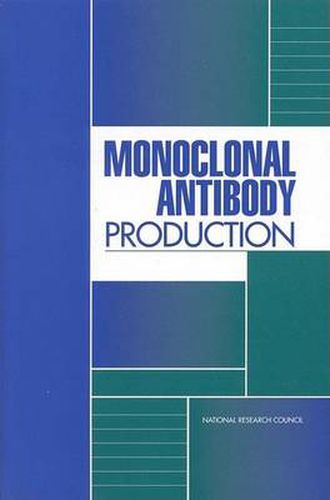Readings Newsletter
Become a Readings Member to make your shopping experience even easier.
Sign in or sign up for free!
You’re not far away from qualifying for FREE standard shipping within Australia
You’ve qualified for FREE standard shipping within Australia
The cart is loading…






The American Anti-Vivisection Society (AAVS) petitioned the National Institutes of Health (NIH) on April 23, 1997, to prohibit the use of animals in the production of mAb. On September 18, 1997, NIH declined to prohibit the use of mice in mAb production, stating that the ascites method of mAb production is scientifically appropriate for some research projects and cannot be replaced. On March 26, 1998, AAVS submitted a second petition, stating that NIH failed to provide valid scientific reasons for not supporting a proposed ban. The office of the NIH director asked the National Research Council to conduct a study of methods of producing mAb. In response to that request, the Research Council appointed the Committee on Methods of Producing Monoclonal Antibodies, to act on behalf of the Institute for Laboratory Animal Research of the Commission on Life Sciences, to conduct the study. The 11 expert members of the committee had extensive experience in biomedical research, laboratory animal medicine, animal welfare, pain research, and patient advocacy (Appendix B). The committee was asked to determine whether there was a scientific necessity for the mouse ascites method; if so, whether the method caused pain or distress; and, if so, what could be done to minimize the pain or distress. The committee was also asked to comment on available in vitro methods; to suggest what acceptable scientific rationale, if any, there was for using the mouse ascites method; and to identify regulatory requirements for the continued use of the mouse ascites method. The committee held an open data-gathering meeting during which its members summarized data bearing on those questions. A 1-day workshop (Appendix A) was attended by 34 participants, 14 of whom made formal presentations. A second meeting was held to finalize the report. The present report was written on the basis of information in the literature and information presented at the meeting and the workshop.
$9.00 standard shipping within Australia
FREE standard shipping within Australia for orders over $100.00
Express & International shipping calculated at checkout
The American Anti-Vivisection Society (AAVS) petitioned the National Institutes of Health (NIH) on April 23, 1997, to prohibit the use of animals in the production of mAb. On September 18, 1997, NIH declined to prohibit the use of mice in mAb production, stating that the ascites method of mAb production is scientifically appropriate for some research projects and cannot be replaced. On March 26, 1998, AAVS submitted a second petition, stating that NIH failed to provide valid scientific reasons for not supporting a proposed ban. The office of the NIH director asked the National Research Council to conduct a study of methods of producing mAb. In response to that request, the Research Council appointed the Committee on Methods of Producing Monoclonal Antibodies, to act on behalf of the Institute for Laboratory Animal Research of the Commission on Life Sciences, to conduct the study. The 11 expert members of the committee had extensive experience in biomedical research, laboratory animal medicine, animal welfare, pain research, and patient advocacy (Appendix B). The committee was asked to determine whether there was a scientific necessity for the mouse ascites method; if so, whether the method caused pain or distress; and, if so, what could be done to minimize the pain or distress. The committee was also asked to comment on available in vitro methods; to suggest what acceptable scientific rationale, if any, there was for using the mouse ascites method; and to identify regulatory requirements for the continued use of the mouse ascites method. The committee held an open data-gathering meeting during which its members summarized data bearing on those questions. A 1-day workshop (Appendix A) was attended by 34 participants, 14 of whom made formal presentations. A second meeting was held to finalize the report. The present report was written on the basis of information in the literature and information presented at the meeting and the workshop.